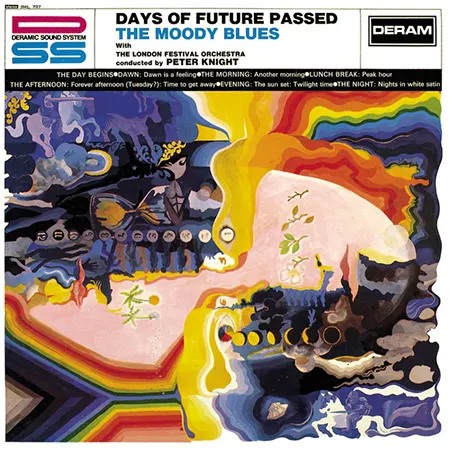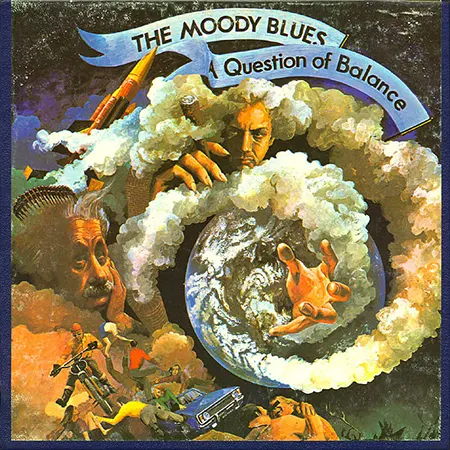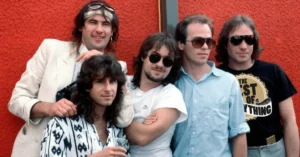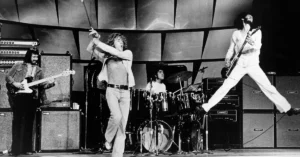The Moody Blues: Architects of Orchestral Rock and Poetic Psychedelia
The Moody Blues. From R&B Roots to Conceptual Rock Pioneers
Few bands have transformed as profoundly and gracefully as The Moody Blues. Emerging from the British R&B scene of the early 1960s, the group evolved into one of the most innovative and enduring forces in progressive and symphonic rock. With a signature blend of poetic lyrics, lush orchestration, and philosophical depth, The Moody Blues were among the first to blend classical instrumentation with rock, helping to shape the concept album as an artistic format.
Formed in Birmingham, England, in 1964, the band would become legendary for their groundbreaking 1967 album Days of Future Passed, a landmark in the development of both progressive and art rock.
The Moody Blues. Early Years (1964–1966): Beat Music and R&B Beginnings
The original lineup featured:
- Denny Laine – vocals, guitar
- Mike Pinder – keyboards, vocals
- Ray Thomas – flute, vocals
- Clint Warwick – bass
- Graeme Edge – drums
Their debut single, “Go Now” (1964), was a massive UK hit, showcasing Laine’s powerful vocals and their early R&B influence. Their first album, The Magnificent Moodies (1965), was rooted in British beat music and blues, placing them alongside early Rolling Stones and Animals material.
However, by 1966, with Laine and Warwick departing, the band underwent a transformation.
The Moody Blues. Rebirth and the Symphonic Revolution (1967–1972)
The arrival of Justin Hayward (guitar, vocals) and John Lodge (bass, vocals) marked the start of a new era. With Pinder’s Mellotron mastery, Thomas’s flute, and Hayward’s melodic vision, The Moody Blues began crafting something unique—rock imbued with classical structure and emotional depth.
Days of Future Passed (1967)
In collaboration with the London Festival Orchestra, this orchestral-rock hybrid fused rock songs with symphonic interludes. Featuring timeless tracks like:
- “Nights in White Satin”
- “Tuesday Afternoon”
It was one of the first successful concept albums, exploring a single day in human life through lush instrumentation and poetic narration. It would later become a staple of psychedelic and progressive rock history.
The Core Seven Albums (1968–1972): Progressive Rock Royalty
The Moody Blues followed Days of Future Passed with a string of albums now referred to as the “Core Seven,” establishing them as true conceptual and musical innovators.
In Search of the Lost Chord (1968)
An album of spiritual and philosophical exploration, featuring Eastern instruments and introspective lyrics. Songs like “Legend of a Mind” paid tribute to counterculture icons (e.g., Timothy Leary).
On the Threshold of a Dream (1969)
This record blended dreamscape poetry with science fiction themes. It debuted at No. 1 in the UK, cementing their growing popularity.
To Our Children’s Children’s Children (1969)
A lush, thematic meditation on space travel and human legacy, released in the wake of the Apollo moon landing.
A Question of Balance (1970)
More stripped-down and rock-oriented, this album featured the classic single “Question”, highlighting their political and existential songwriting.
Every Good Boy Deserves Favour (1971)
Named after a musical mnemonic, this album returned to denser symphonic arrangements and included the fan favorite “The Story in Your Eyes.”
Seventh Sojourn (1972)
Dark, philosophical, and richly textured, this album included “Isn’t Life Strange” and “I’m Just a Singer (In a Rock and Roll Band)”. It marked the end of the band’s first era before their long hiatus.
Hiatus and Solo Projects (1974–1977)
After the pressures of fame and touring, the group went on hiatus. During this time, individual members released solo albums:
- Justin Hayward & John Lodge’s Blue Jays (1975)
- Graeme Edge Band’s solo work with contributions from Adrian Gurvitz
- Mike Pinder’s The Promise (1976)
Despite their time apart, fan interest in the band never waned.
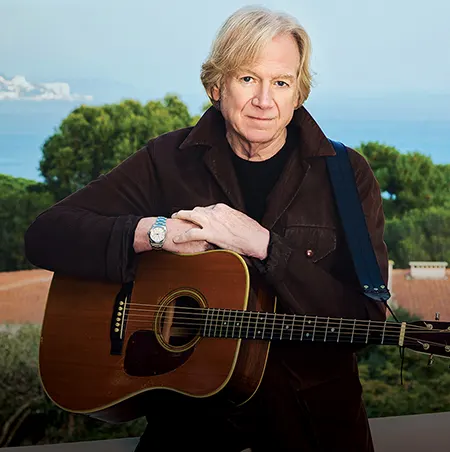
The Moody Blues. Comeback and 1980s Transformation (1978–1991)
The Moody Blues returned with a modernized sound and production in the late 1970s.
Octave (1978)
The first new album in six years saw the return of lush melodies, though without Mike Pinder, who was replaced by Patrick Moraz of Yes.
Long Distance Voyager (1981)
This was a triumphant comeback. With hits like “The Voice” and “Gemini Dream”, the band successfully merged their symphonic roots with 1980s synth-pop sensibilities. The album reached #1 in the U.S.
The Present (1983)
A follow-up that maintained their dreamy, melodic identity in a changing musical era.
The Other Side of Life (1986) and Sur la Mer (1988)
These albums leaned heavily into synthesizers and MTV-era polish, with tracks like “Your Wildest Dreams” gaining airplay and introducing the band to a new generation.
The Moody Blues. Later Years and Final Albums (1990s–2000s)
Keys of the Kingdom (1991)
A return to more organic instrumentation, though still embedded in soft rock textures.
Strange Times (1999)
A mature, reflective work that many fans consider a return to form. This would be the last studio album with full participation from all members of the “classic” lineup.
Musical Style and Legacy
The Moody Blues carved out a sound that is unmistakably their own:
- Mellotron-driven orchestration (particularly via Mike Pinder)
- Romantic and philosophical lyrics
- Narrative album structures
- Lush vocal harmonies
- Blending of symphonic music with psychedelia and rock
Their influence can be felt in:
- Progressive bands like Barclay James Harvest, Genesis, and Yes
- Art-rock acts such as Alan Parsons Project and Supertramp
- Later symphonic and neo-prog bands in the 1990s and 2000s
Notable Albums Overview
- Days of Future Passed (1967)
- In Search of the Lost Chord (1968)
- On the Threshold of a Dream (1969)
- To Our Children’s Children’s Children (1969)
- A Question of Balance (1970)
- Every Good Boy Deserves Favour (1971)
- Seventh Sojourn (1972)
- Long Distance Voyager (1981)
- Strange Times (1999)
Legacy and Recognition
Though they were often overlooked by critics during their heyday, The Moody Blues have been hailed as pioneers of progressive and symphonic rock. Their combination of existential lyricism and sonic beauty has inspired countless musicians. In 2018, after decades of lobbying by fans, they were inducted into the Rock and Roll Hall of Fame.
They sold over 70 million records worldwide, with multiple platinum albums in the U.S. and enduring popularity across generations.
Fun and Unique Facts
- “Nights in White Satin” took five years to chart in the U.S.—originally released in 1967, it became a hit in 1972.
- The band often used spoken-word poetry, written and recited by Graeme Edge, to open and close their albums.
- Mike Pinder helped popularize the Mellotron in rock music and even advised The Beatles on its use for “Strawberry Fields Forever.”
- Their live concerts often featured full orchestras, especially in later years.


